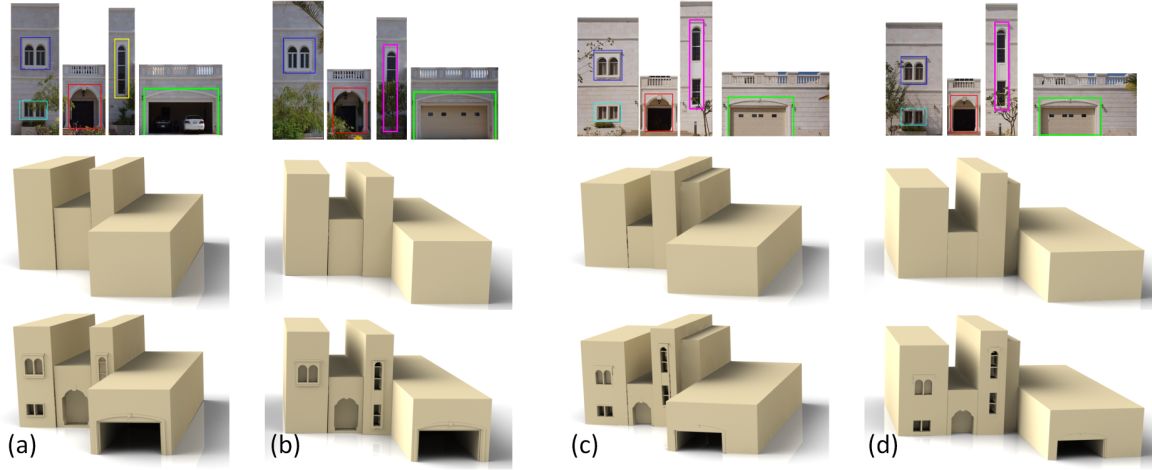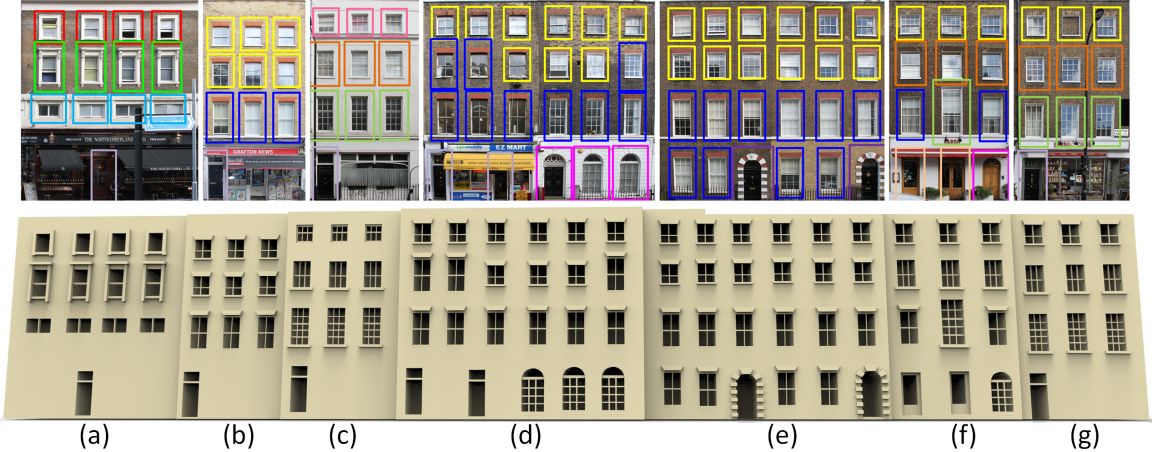Template Assembly for Detailed Urban Reconstruction
Computer Graphics Forum, Vol. 34, No. 2, 2015 (Eurographics 2015)
King Abdullah University of Science and Technology (KAUST), KSA

Figure 1: Two buildings reconstructed with details using our template assembly approach. From top to bottom: the template locations marked in the optimized texture images, the coarse model, and the detailed 3D surface model. Different colors indicate different templates.
Abstract
We propose a new framework to reconstruct building details by automatically assembling 3D templates on coarse textured building models. In a preprocessing step, we generate an initial coarse model to approximate a point cloud computed using Structure from Motion and Multi View Stereo, and we model a set of 3D templates of facade details. Next, we optimize the initial coarse model to enforce consistency between geometry and appearance (texture images). Then, building details are reconstructed by assembling templates on the textured faces of the coarse model. The 3D templates are automatically chosen and located by our optimization-based template assembly algorithm that balances image matching and structural regularity. In the results, we demonstrate how our framework can enrich the details of coarse models using various data sets.
Overview

Results


Figure 4: Detailed reconstruction of seven street-side facades.

Figure 5: Textured detailed models of the two buildings in Figure. 1. The inset shows the real photograph for a visual comparison.

Figure 6: A comparison of template assembly results without (top) and with (bottom) the geometry-appearance optimization of the coarse model. From left to right: the template assembly result, the final 3D reconstruction, the transformed 3D templates overlayed on the textured coarse model, and a close-up view. Clearly, the geometry-appearance optimization step leads to more consistent geometry, better localized template detections, and a more accurate detailed model.
Paper [14M PDF]
Video [57M MOV]
Slides [87M Slides]
Suppl1 [1M PDF], Suppl2 [1M PDF]
Acknowledgements
We thank the anonymous reviewers for their valuable comments and suggestions. Special thanks goes to Dr. Neil Smith for providing us the easy-to-use data acquisition system and the data for initial experiments. We also thank Guangfan Pan for texturing the model shown in Fig. 10. This work was supported by the KAUST Visual Computing Center.
BibTex
@inproceedings { nan2015template,
title = {Template Assembly for Detailed Urban Reconstruction},
author = {Nan, Liangliang and Jiang, Caigui and Ghanem, Bernard and Wonka, Peter},
booktitle = {Computer Graphics Forum},
volume = {34},
number = {2},
pages = {217--228},
year = {2015},
organization = {Wiley Online Library}
}